A Conversation With Pedro Gonzalez-Rubio (ALAMAR)
I first saw Pedro Gonzalez-Rubio’s Alamar back in January, where it shared the Tiger Award at the 2010 International Film Festival Rotterdam (and was subsequently picked up for distribution by Film Movement). I felt confident at that early time in the year that it would definitely make my overall Top 10 when it came time to make my Top 10 of 2010 list. Now that we are in July and have reached the year’s halfway point, I can guarantee that not only that it will crack my Top 10, but it will be near the very top of my list. I wrote this about the film in my Rotterdam wrap-up:
Mexican director Pedro Gonzalez-Rubio’s Alamar is a breathtaking little gem that is executed with such seeming effortlessness I was convinced it was a documentary. While it might be lazy—and not entirely accurate—to call it Malickian, Gonzalez-Rubio shows a similar reverence for nature that isn’t overly simplistic and hippified. This touching story of a young boy and his father spending time in Mexico’s Banco Chinchorro coral reef, fishing and existing meal to meal, day to day, with their father/grandfather, is a pleasant reminder that industrialization hasn’t steamrolled its way into every corner of the world (not yet, at least). And when it’s time for the little one to return to Italy with his mother, Gonzalez-Rubio doesn’t provide an obnoxiously loud contrast between the sea and the city. Back on land, in this more developed setting, the beautiful memories of that quiet life linger.
In the weeks leading up to the film’s theatrical release at the Film Forum on July 14th (go here to learn more), I sat down with Gonzalez-Rubio to discuss his very precious gem.
Hammer to Nail: The first time I saw the movie it played like an in-the-moment love letter between a father and a son. But the second time around, it felt more like a dream, particularly a dream that this child, now grown up, might have decades later when this special moment in time was only a distant memory. I’m wondering how the film speaks to you, personally.
Pedro Gonzalez-Rubio: Probably the fact that you mention it played to you like a dream has to do with this melancholy that is felt throughout the film. Even though we’re watching moments that are very alive and intimate, it seems as if the world portrayed is as a father-and-son utopia. So it’s kind of like a memory. When you’re very fond of a certain experience, all that you can remember are the good things. This film is not related to any experience of my own. I did go to the Caribbean as well when I was a kid, and then I decided to leave there. For seven years, I’ve been living in Playa del Carmen. And I’ve seen how it’s in constant transformation, a metamorphosis of the landscape, of the people who arrive there. Before it used to be much more hippy and laid-back, and now it brings out… I don’t know if ‘sophisticated’ is the right word… a different kind of crowd. Also, Playa del Carmen used to be a fisherman’s village and now it’s like a tourist city with, I don’t know, Johnny Rockets.
H2N: Great! [laughs]
PGR: For me, Alamar was kind of like my own small battle against that, for the type of life that once used to be there but that I can now only find six hours from Playa del Carmen in the south, in this natural reserve where they try to maintain an almost intact system and also protect the lifestyle of the fishermen there. It’s very similar to what Playa used to be 15/20 years ago.
H2N: Was this as much of a one-man show as it seems? I’m not saying that to be critical. It just feels so disarmingly intimate. Was there an actual crew?
PGR: Most of the scenes were shot with a friend of mine doing sound and operating the boom, and myself on camera. And some of the shots were just myself with the mic attached to the camera. There’s a scene where they are playing with the bird, Blanquita, and that was just myself, the camera, and the bird.
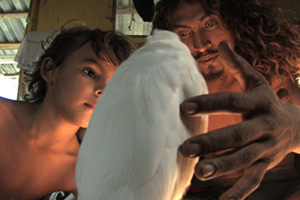 H2N: This appears to be the type of film that doesn’t have a ‘script’ in the traditional sense. I’m wondering how you approached the story’s construction. Did you draw up an outline? Or did you, in fact, write out a script?
H2N: This appears to be the type of film that doesn’t have a ‘script’ in the traditional sense. I’m wondering how you approached the story’s construction. Did you draw up an outline? Or did you, in fact, write out a script?
PGR: No, no script. There was a story treatment. Once I knew what my elements were and who I was gonna use—Jorge [Machado] and Natan [Machado Palombini], who I would take to a specific location and we were gonna spend days at the fisherman’s house. I wrote down an outline of key scenes, key factors that I wanted to achieve. I knew it was gonna be a farewell trip, and so at the beginning I wanted Natan and Jorge to be less close with each other. That’s why when you see the bus ride, Natan is thinking about being with his mother. And then, little by little, the bond begins to get closer. So that was previously thought. And then I said, “Okay, how am I gonna bring the bond together?” And I thought through activities, through the daily work, that would achieve the bond.
I was also open to natural things. It’s a very naturalistic film, so when the bird arrived one day, I decided I was gonna use that to make the point stronger of Natan’s own reality and his own voyage. I also knew that I wanted to end in Italy. First it was gonna be in the streets of Roma, but I thought that was gonna be too contrast-y.
H2N: Thank you for not doing that. You’re still making your point but by putting them in a quieter location and in nature, you’re respecting the tone of the film. That would have been way too distracting.
PGR: Exactly.
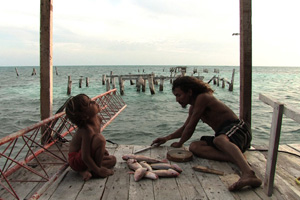 H2N: How about rehearsing? It seems that this is the type of project in which making these people feel comfortable around the camera is more important than doing any puppeteering or pointed ‘direction.’
H2N: How about rehearsing? It seems that this is the type of project in which making these people feel comfortable around the camera is more important than doing any puppeteering or pointed ‘direction.’
PGR: Yeah, I think the first days involved adjusting to each other and the dynamics of having a camera constantly on the activities. But I realized that putting the characters’ constant attention into something very specific worked, such as fishing or cleaning the fish or painting the wall. I was having a very spontaneous attitude towards the whole situation, and that’s what I wanted. I didn’t do any rehearsals, I didn’t do double takes. I would tell them what the activity was going to be and then I would place my camera as in a documentary. I would just follow their activity.
H2N: That word documentary is huge, and I think it’s why this film is winning so many awards and people are falling in love with it. Though it has the technique of a naturalistic documentary, it also has the lyrical sweep of a Terrence Malick film. How did you strike that balance?
PGR: From the very beginning I was searching for a cinematic language. It does feel like a documentary, but recently I was in a seminar where we saw a lot of pure documentaries, and compared to those we could really see the difference and see this film as a fiction—because of where the camera is placed, and all the set-ups. But then it does feel like a documentary because there’s no written dialogue, and these are real characters and they’re very organic as well within the location, so it feels balanced.
I remember that I wanted to tell a lot of things through images rather than dialogue, so that’s why this lyricism is constantly there. The first shot we see of Jorge and Natan together is them looking towards this road, with the cars pointing into the direction they have to take. And Jorge’s only gesture is having his arm around Natan. I wanted to start with very subtle gestures. And opening windows and opening doors. For me, while filming, I was thinking of some of the things as metaphors, but you can see them without feeling that the director is pushing an idea or one’s own fantasies into the story. It’s done in a natural, subtle way.
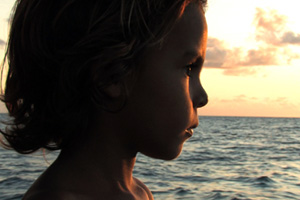 H2N: In that way, how close in essence does the finished film reflect the kernel of the idea you had when you said, “I’m going to make this movie?”
H2N: In that way, how close in essence does the finished film reflect the kernel of the idea you had when you said, “I’m going to make this movie?”
PGR: For example, when they go look for the bird, I had the idea of this tower going all the way into the sky as well. They are unable to find her because it’s the own destiny of the bird to continue with her voyage. And then the last time Natan shouts the name of the bird, this panoramic point-of-view from the top, just watching the sea and the mangrove by itself, and feeling also the absence of the element of the bird, without actually saying it or pushing this idea that they are not finding Blanquita. To make the images more lyrical.
H2N: Editing certainly plays into the lyricism. You give us enough information without ever going overboard. The one shot that really stands out for me is when the father is holding his seasick son and there’s a shot of his hand holding him. You don’t oversell that, which is so often the case in movies. How much work did you do to get the film into its final shape? Were there many different versions or was it simply refining your initial assembly along the way?
PGR: It took quite a while, because I also did the logging [of footage]. The editing was very hand crafted as well.
H2N: What camera did you use?
PGR: An HDV. A small, very accessible camera.
H2N: It looks beautiful on the big screen, whatever you did in post!
PGR: The logging helped me to know the footage very well. It was a long process. Basically, what took the most time was getting the proper rhythm. I wanted to get the same pace that you have at that place in the sea. In the beginning, some takes were a bit long so I said, “Oh, no, it doesn’t require it to be that slow.” Also, I combined different times to enrich a scene. Something that I shot in the second trip I put in one scene I shot in the first trip. For example, the arrival, when we are crossing, that is the crossing from the first trip. But then when the grandfather is picking them up on the boat, I did that on the second trip. I did two trips in total, so I had been editing already from my first trip. So for the second one I knew I wanted to shoot certain things to make it more substantial. The second trip was a lot for filling in the blanks. [both laugh]
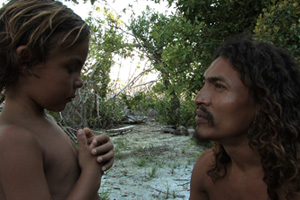 H2N: In a broader sense, is this approach to filmmaking something you want to keep doing? Or was Alamar a function of this particular story and situation?
H2N: In a broader sense, is this approach to filmmaking something you want to keep doing? Or was Alamar a function of this particular story and situation?
PGR: At least for the next film, I would like to continue with the same dynamic. Especially having a crew of two—myself and a sound person. I feel very comfortable and I think the relationships that I establish with my characters, in this style I obtain more intimacy. And we can shoot at our own pace. If you have a bigger crew, then you have a very tight schedule and it’s stricter. Here, it was like our own breakfast and our own lunch would be part of the film. The border between our own daily activities and the characters’ activities was very blurry. It was very organic.
H2N: How long had you been with the three main actors before shooting?
PGR: One month before shooting I was working with Jorge and Natan. I went with Natan to his kindergarten with a camera so that he could get used to it. Actually, Natan was very easy to work with. He had no preconceptions towards what he should say or what he should do.
H2N: You talked about making something that reflected the calm rhythm of that world, and you certainly succeeded on that end. So much so that it feels to me like your production mustn’t have had any troubles at all. Were there, in fact, any moments of production panic along the way?
PGR: There were some technical problems. To film in the middle of the sea, it gets very hot and humid, and you get a lot of salty elements in the camera. So we had to constantly clean the camera and equipment.
H2N: Did you get seasick?
PGR: Yeah, but just the beginning. By the third day you’re at sea, you don’t get seasick anymore. You get used to the movement of the boats. Bringing Natan to that location, you’re in the middle of the wild, and so there are crocodiles. [H2N laughs] We had to be very, very careful.
H2N: That one scene where they’re cleaning the boat and he keeps getting closer to the crocodile is so scary because it’s clearly real!
PGR: But he was always safe with Matraca and Jorge.
— Michael Tully







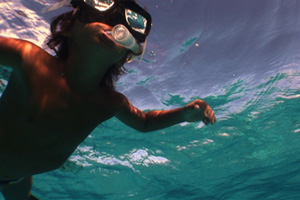

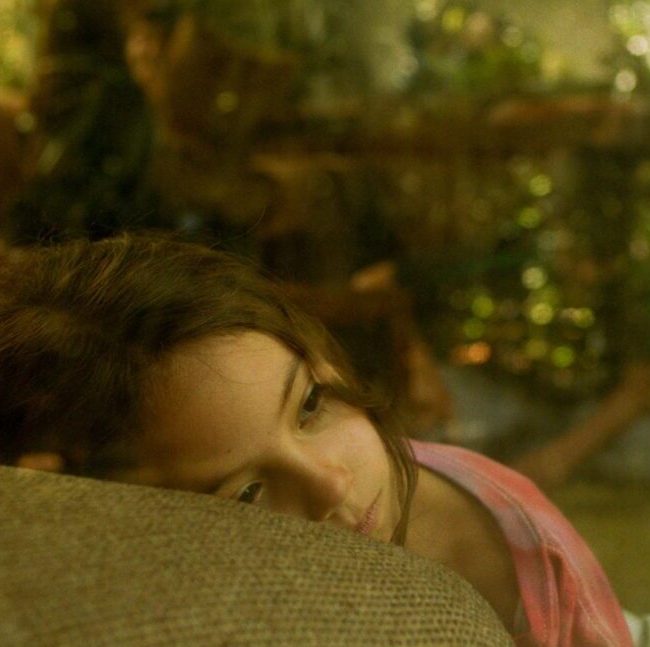
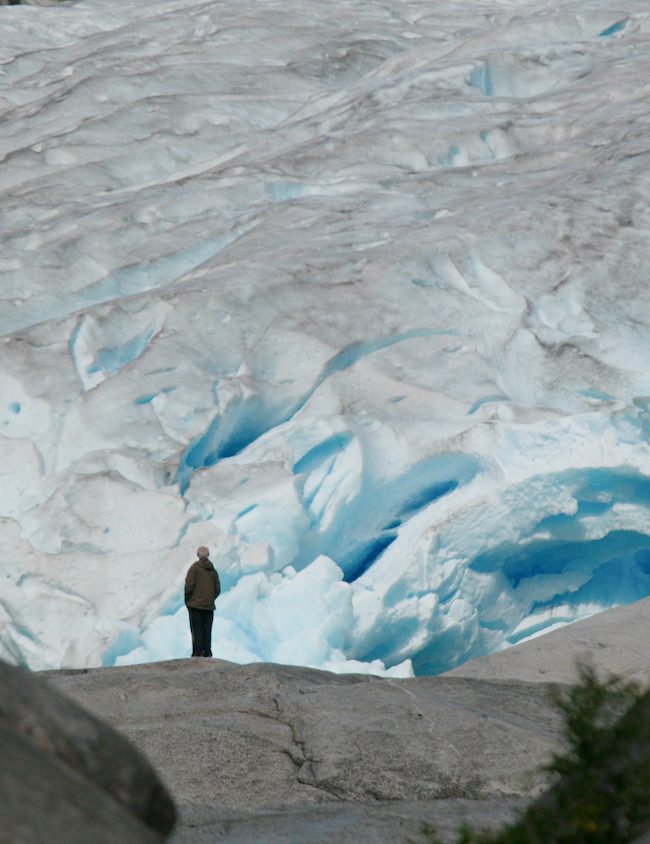


randy
i added this to our netflix queue based on your recommendation. excited to see it.
Kristen Callahan
The rhythm of Alamar matches my native state. I have viewed this film so many times I can’t count. I feel
connected to these folks and am glad that Pedro Gonzalez-Rubio is getting the praise he so richly deserves.